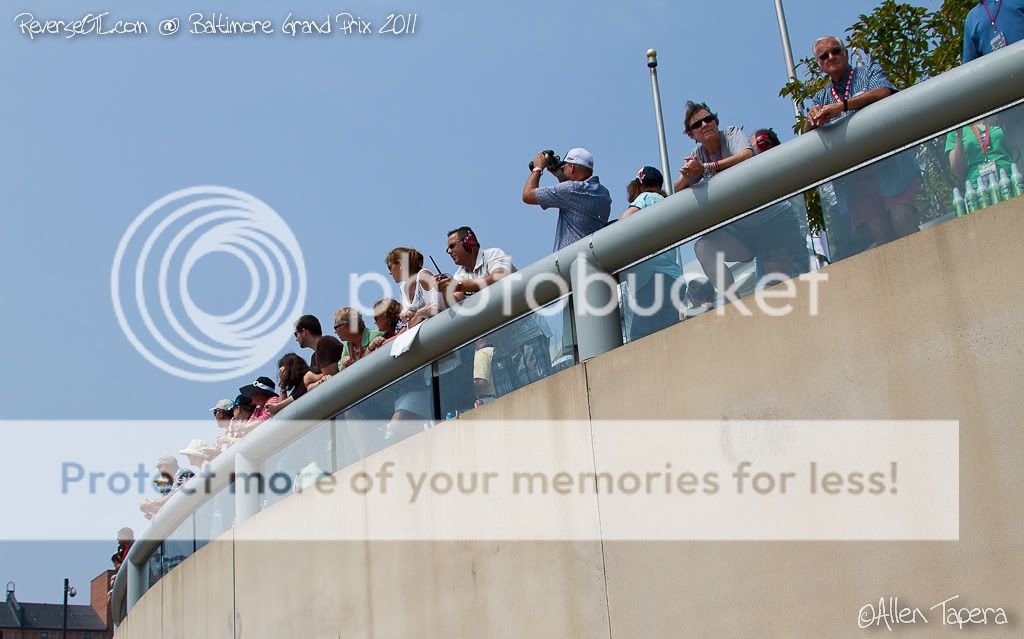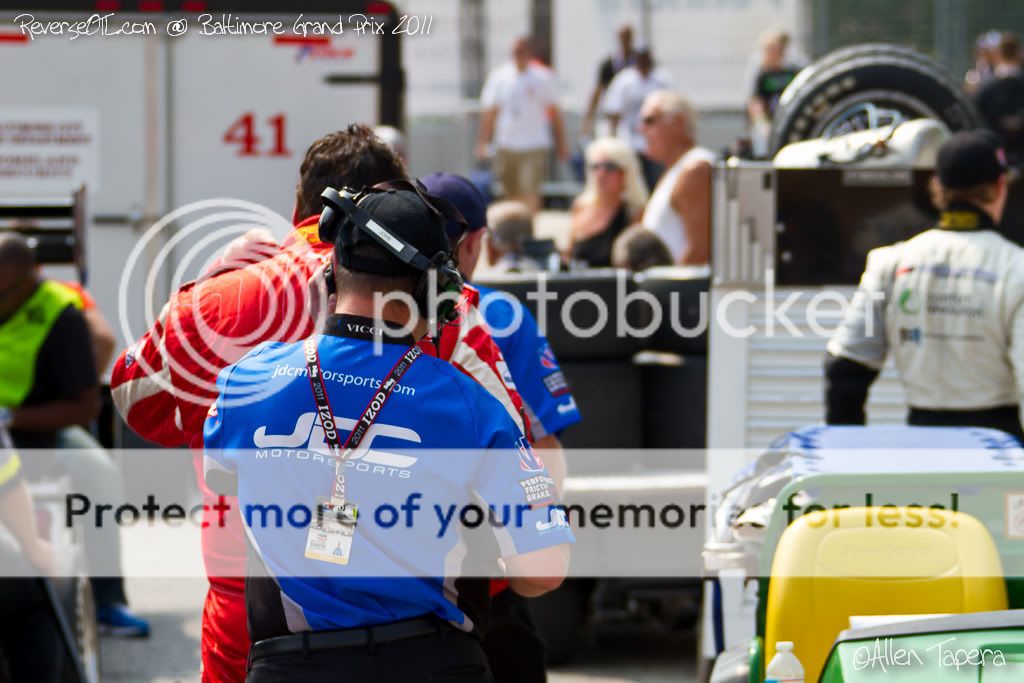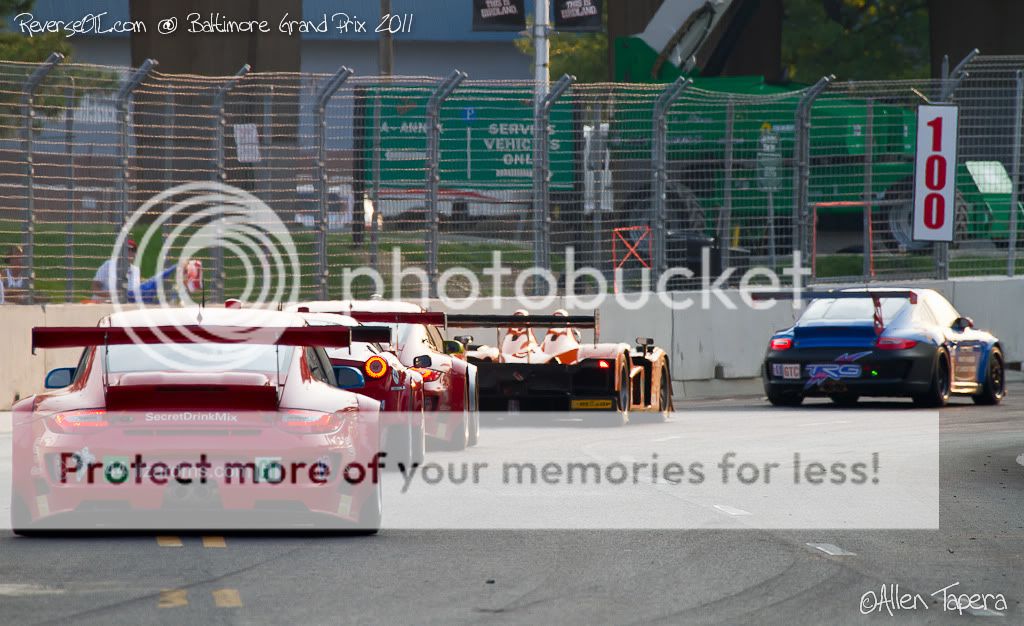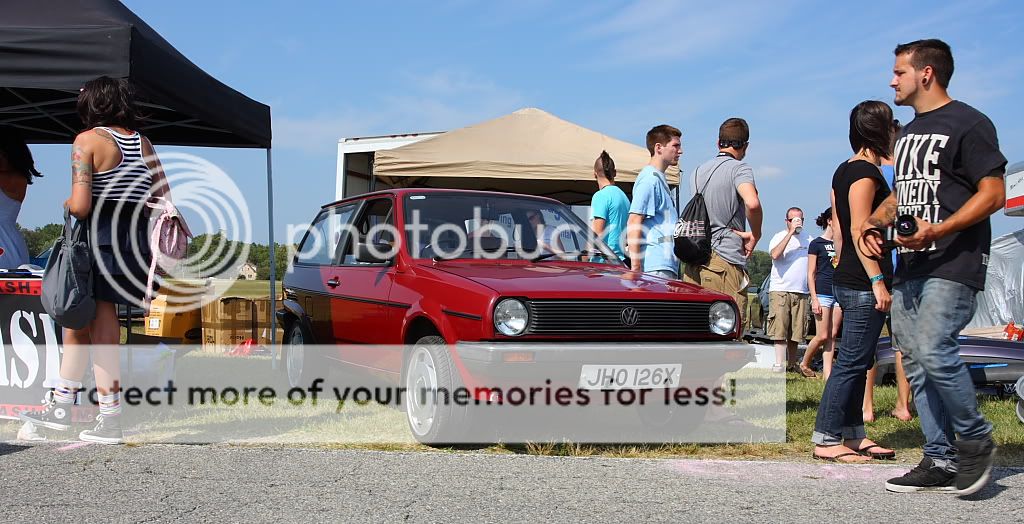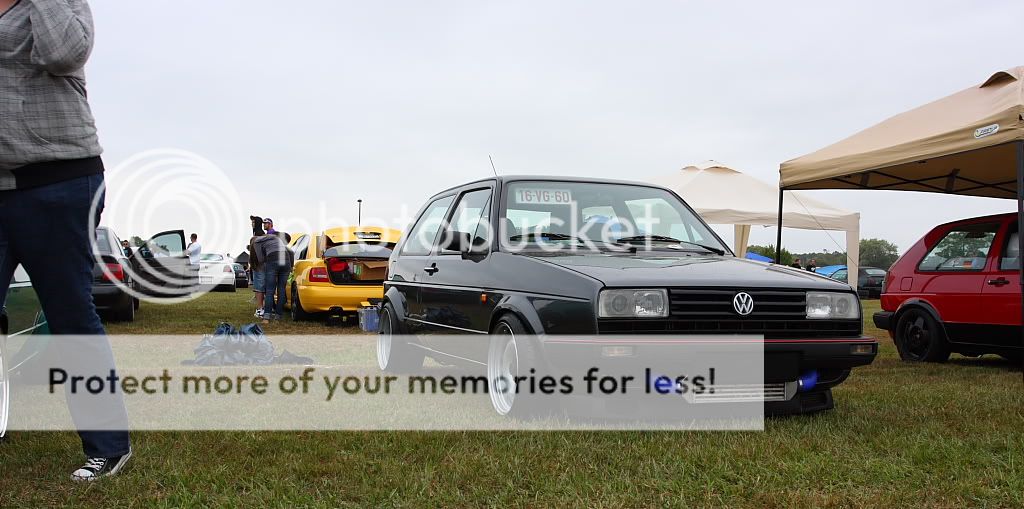 |
| Author: uknown |
Friday, September 16, 2011
Thursday, September 15, 2011
What to watch this weekend (Sept 15th - Sept 21st)
- GT Racer - Mangny Cours. Saturday @ 10am - 11am (Discovery's HD Theater) replay
- Isle of Man 2011. Sidecar TT Race 2. Saturday @ 11am - 12pm (Discovery's HD Theater)
- Rolex Sports Car Series. EMCO Gears Classic. From Mid-Ohio Sports Car Course in Lexington, Ohio. Saturday @ 3pm - 6pm (SPEED/SPEEDHD) live
- American Le Mans Series. ALMS Montery. From Laguna Seca raceway in California. Saturday @ 4:15pm - completion (ESPN3.com) replay Sunday @ 1p on ESPN2
- IndyCar Series - Japan 300. From Twin Ring Motegi circuit in Motegi, Tochigi, Japan. Saturday @ 11:30pm - 2am (VS/VSHD) live
- Top Gear America. Season 2 - Episode 8; Hollywood cars. Sunday @ 10pm - 11pm (History Channel/History Channel HD)
- What's my car worth? Mini-marathon including Season 3 Episodes 1 and 2. Monday @ 8pm (Discovery's HD Theater) some new some replays
- Top Gear (UK). Season 17, Episode 5. Monday @ 9pm - 10pm (BBC America/BBC America HD) replay at 11:40pm
- Chasing Classic Cars. Tuesday @ 10pm - 11pm (Discovery's HD Theater) replays
- The Car Show with Adam Carolla. Wednesday @ 10p - 11pm (SPEED/SPEEDHD)
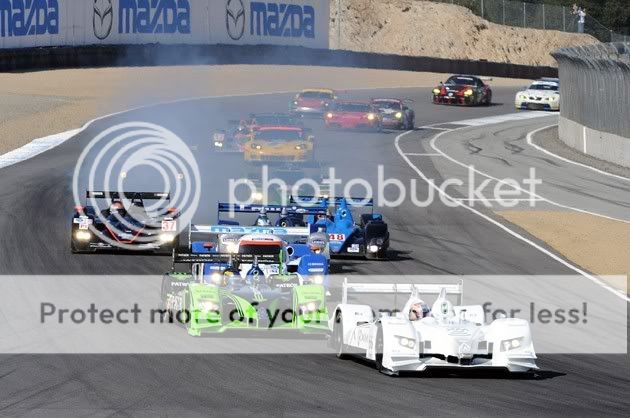 |
| Image courtesy of autoblog.com |
Wednesday, September 14, 2011
Baltimore Grand Prix 2011 - Baltimore's Cloudless Thunder.
Motorsport isn't something that everyone flocks to. People who live for the sounds of engines or driving a well sorted automobile, spending countless hours building and repairing their own cars, don't understand the perspective of those that don't share the same mindset. People who love motorsport are an even smaller subset of that same group. Racing is loud, smelly, dangerous and expensive. Racing is also one of the purest expressions of competition and skill. Racing is called motorsport because it involves motorized vehicles of course, but also because there are no points tallied during a race for actions performed like a game; there is only crossing the finish line first; winning and losing. Fortunately for all of us motorsport enthusiasts in the greater Mid-Atlantic area, 'winning and losing' is what makes the draw of auto-racing occasionally skip past the lines of automotive enthusiast and non-enthusiast. The occasion I speak of was the inaugural running of the Baltimore Grand Prix (BGP).
After logistics and tax dollars were championed in 2010, the Baltimore Grand Prix (BGP) was green-lit for the streets of Baltimore Maryland's Inner Harbor. The IZOD IndyCar Series had lost a couple race venues from the 2010 season and the BGP group bid its way, filling one of those slots, ultimately becoming the 15th round of the 2011 IndyCar Series Championship. Things got more interesting when the American Le Mans Series (ALMS) signed on to hold its 7th round on the same weekend. ALMS hopping on board was important for the hardcore US road-racing fans who mainly watch European auto racing, and without them I suspect the draw on Saturday wouldn't have been half of what it was. Before the weekend was underway however, the question that remained was if the inaugural BGP could be pulled off and be profitable; given the Baltimore Festival of Speed is now over, it can comfortably be said that it was.
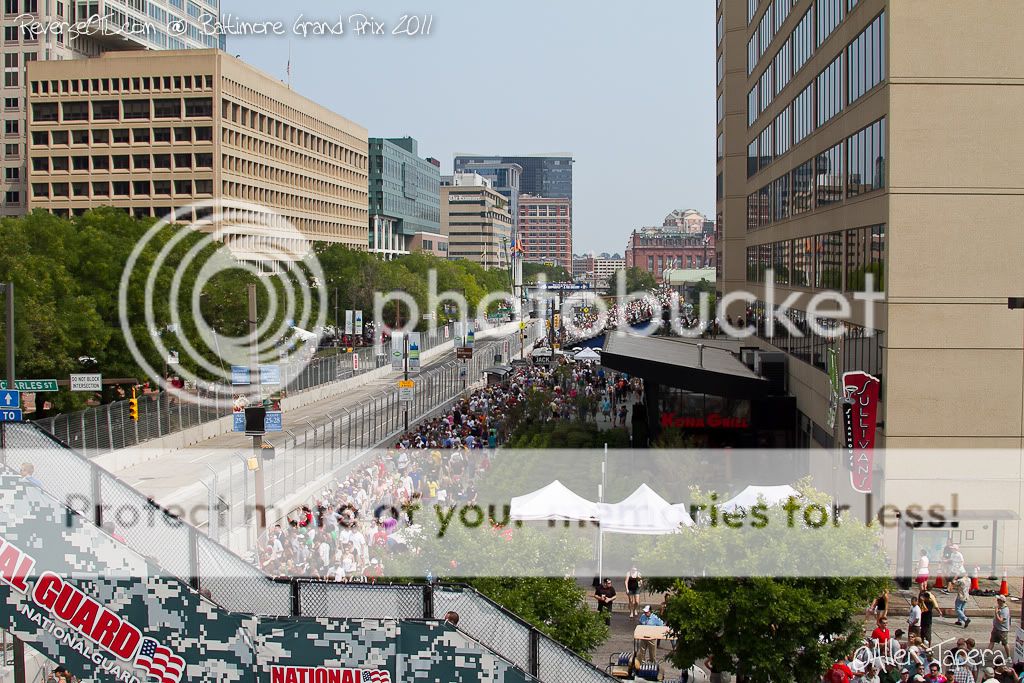 |
| Pratt Street straight. |
 |
| One of many bottlenecks on Sunday. |
Now one thing everyone should understand is that a lot of these issues are symptoms of street race events in general, due to the nature of the event; street tracks are created from existing cities that aren't necessarily designed to handle the on foot quantities that result from a large public draw. There were a lot of local police assigned to manage the flow in areas like the aforementioned walkway, that had to deal with the direct outbursts of irate fans just to keep a potentially unsafe situation from escalating and I salute them for doing so. I hope BGP organizers took note of problems like these so that everyone involved can have a better experience next year.
The BGP was primarily created to earn money for the city of Baltimore, but a more important side effect in my opinion was getting people exposed to racing. From Friday to Sunday the sights and sounds around the BGP grounds had a common theme; hardcore race fans, fans of large public events, the occasional race event watcher and the completely green (children and adults), all gathering to see what types of things go on at an event like this one. Even the people who just wanted an excuse to put down a few drinks with friends somewhere were covered, just with better background music than most places.
When you think back to your first big public event as a child, Barnum and Bailey's Circus for me, it's something that sticks with you for a lifetime. You'll either love the experience or hate it, and aside from kids holding their ears because of parents not smart enough to buy them earplugs, I saw plenty of youth that were completely ecstatic about what was happening before them. I sincerely hope these kids, and the thousands of adults that came to their first race event in Baltimore, can continue to support things like the BGP. Unfortunately for road-racing fans, popular, financially-sustainable racing in America is pretty much NASCAR or nothing. Other forms of motorsport that take place solely on road courses (left and right turns), represented primarily by the Grand-Am and ALMS/Petit LeMans series' here in the US, need continued growth in popularity or they will become even harder to come by both on TV and in person. If the solution to this problem is ALMS piggy-backing IndyCar events (or vice versa) a couple times a year, then so be it. We need more American drivers represented in international racing series (F1, Touring Car, etc.) and for this to happen more kids in this country need to be exposed to racing early and often.
When you think back to your first big public event as a child, Barnum and Bailey's Circus for me, it's something that sticks with you for a lifetime. You'll either love the experience or hate it, and aside from kids holding their ears because of parents not smart enough to buy them earplugs, I saw plenty of youth that were completely ecstatic about what was happening before them. I sincerely hope these kids, and the thousands of adults that came to their first race event in Baltimore, can continue to support things like the BGP. Unfortunately for road-racing fans, popular, financially-sustainable racing in America is pretty much NASCAR or nothing. Other forms of motorsport that take place solely on road courses (left and right turns), represented primarily by the Grand-Am and ALMS/Petit LeMans series' here in the US, need continued growth in popularity or they will become even harder to come by both on TV and in person. If the solution to this problem is ALMS piggy-backing IndyCar events (or vice versa) a couple times a year, then so be it. We need more American drivers represented in international racing series (F1, Touring Car, etc.) and for this to happen more kids in this country need to be exposed to racing early and often.
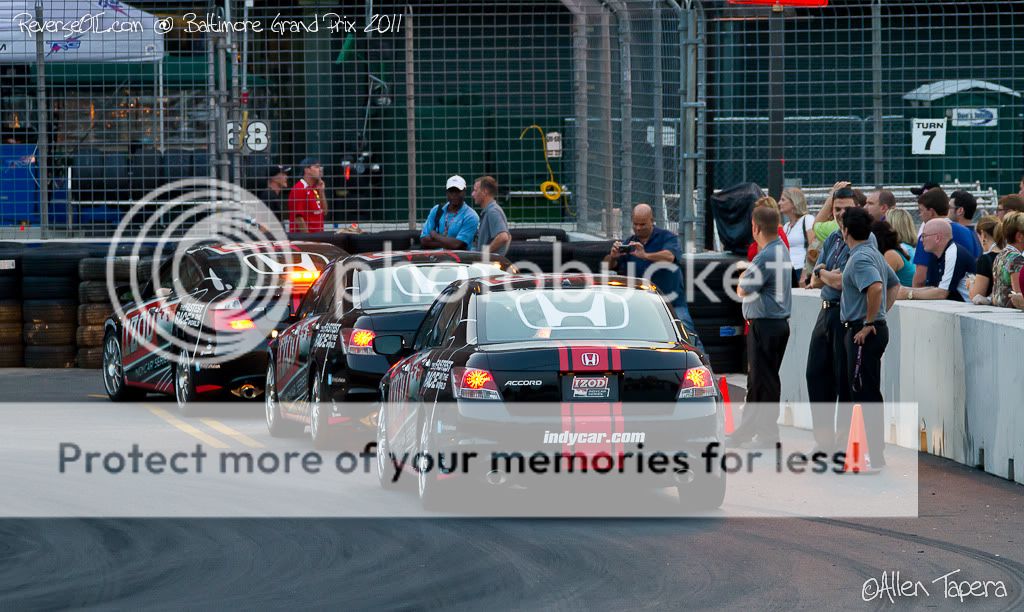 |
| Conor Daly and two other IndyLights drivers taking military families on track tours. |
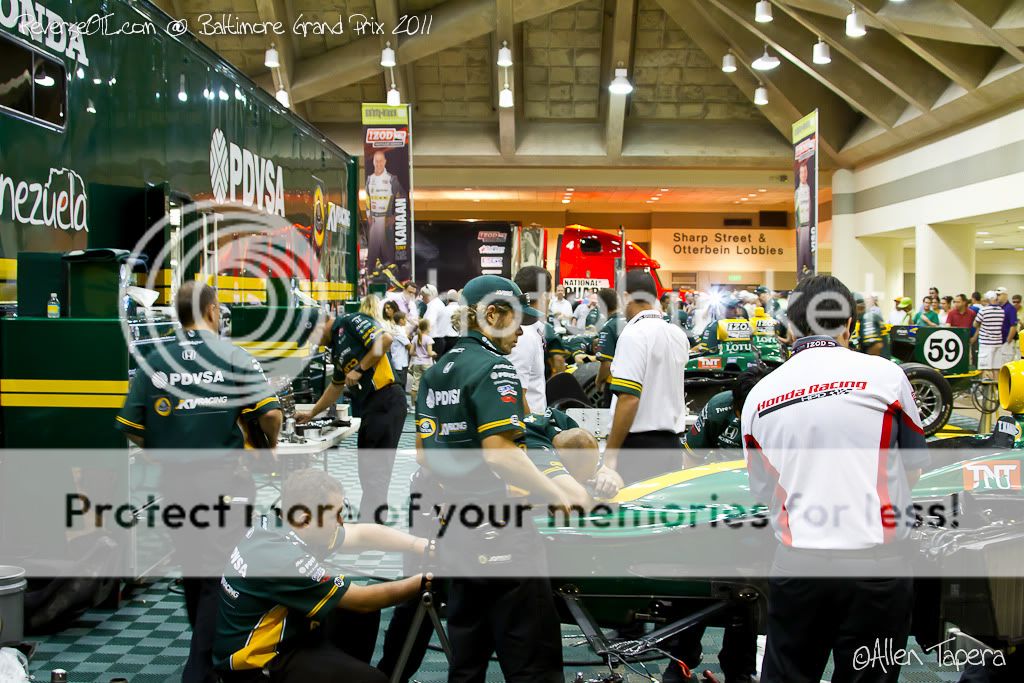 |
| IndyCar Paddock, pre-race on Sunday. Crew building Tony Kanaans' car after morning practice incident. |
What made the competition so exciting at the BGP was not only the great drivers and legendary teams that participated, but the unique track that resulted from the absolutely incredible transformation of existing roads in Baltimore's Inner Harbor. I drive these roads several times a month and I was more than impressed with what organizers were able to do in such a short amount of time. There were some issues with the track that had to be tackled before teams were comfortable however; the first of which were the infamous Light Rail tracks that crossed over Pratt Street at the intersection with Howard Street. For road cars there is a reasonably manageable dip in the road, where these tracks lie, but for race cars hovering an inch or two above the pavement it was quite the prospect to hit this dip while accelerating to top speed on this long straight.
The solution to this quandary, which was planned by BGP organizers months ago, was to build a chicane to not only slow down the race cars before the tracks but also direct them over the smoothest part of Pratt Streets rails. Chicane construction, which consisted of three swimming noodle shaped curbs being installed, 'ramped' with additional tarmac then painted red and white, was going on late Thursday afternoon and unsettled many who were participating. By Friday morning the chicane was painted, but additional fence reinforcement was being added to different sections of the track, delaying scheduled morning practice and afternoon qualifying. In order to keep delays within reason, the organizers shortened some of the extra-curricular track activities during the day, like the 2-seater IndyCar rides and Honda Accord ride-along's with pro-drivers. While the crowds were chomping at the bit for action prior to the start of Friday's first practice session, event goers in the grandstands stayed in good spirits.
The racetrack was fast and tight with a few sneaky turns that caught several drivers out throughout weekend. The straight into Turn #1 was heavy braking funneling area that lead to several incidents, much like Turn #3. There were a few victims at Turn #10, which depending on the speed you come through it with can present a sneaky-sharp direction change without friendly tire-barriers to help out if you push wide. Drivers adjusted as the weekend sessions went along and continuously got faster. During practices on Friday and the ALMS race Saturday we had the opportunity of capture drivers navigating the pit exit junction at Turn #8, then blasting down the dogleg into Turn #9. The chicane at the beginning of the Pratt Street straight worked out as planned, with some short flight dramatics provided by a few of the open wheeled racers. On Sunday during the IndyCar race, we spent most of our time non-commuting time at Turn #4, taking full use of an aerial vantage point without equal (thanks Jerry). The track workers and officials worked a great race for ALMS and IndyCar, but there were some inexplicable extended caution laps mid-race in IndyCar that seemed to go on without end.
 |
| The chicane build on Thursday afternoon. |
 |
| IndyCar official checks chicane condition prior to Friday's afternoon practice session. |
 |
| The view while waiting in line to get to Grandstand #7 was pretty good. |
 |
| Start of IndyCar practice session on Friday evening. |
All in all I think the event was a great success that I would not have bet on days leading up to the race. Organization of the entire operation wasn't without flaws, ask anyone who worked this event as media, but the event expectation was met and the races were completed as scheduled for television broadcast. Hurricane Irene whipped the East Coast into a frenzy just days prior and potential turnout and racing team participation was questioned on every online fan portal you can think of. Not every local business benefited as much as they hoped due to the number of road closures and where they took place, but money was poured into the city via ticket sales, the local restaurants and vendors that setup within the grounds to sell to walkers-by, and the many local parking garages and hotels which got their best Labor Day weekend take in years. There was a wide variety of food and drink, activity areas outside and inside like the ALMS and Indy Paddocks, as well as live music performances outside of the Baltimore Convention Center (See yellow 'W'). All this and it was still reasonably easy to leave the city via 83N or 395/MLK Blvd since most people used the ever affordable MTA Light Rail to get there. IndyCar and ALMS drivers interviewed applauded the crowd that Baltimore produced and were impressed by this little thing called the Inner Harbor that so many of us locals have enjoyed for decades. The backdrop of harbor marinas, yachts and city skyline east of the Light Street grandstands was a sight to behold and as a poor man's Monaco, I think Baltimore fits the bill.
-AT
-AT
Labels:
2011,
alms,
baltimore grand prix,
current events,
F2000,
Indylights,
IZOD IndyCar Series,
star mazda
Tuesday, September 13, 2011
Quick Vid: Porsche 956 driven by Derek Bell
Derek Bell drives the legendary Porsche 956 at this years Goodwood Festival of Speed.
Video courtesy of Porsche.
Video courtesy of Porsche.
Labels:
956,
derek bell,
goodwood,
porsche,
quick vid
Monday, September 12, 2011
Upcoming Show: H2o International 2011
It's that time of year again. The summer is coming to a close, the fall equinox is in the near distance and there's one last show to run through before taking dem show wheels off. It is time for H2o International 2011. If you remember the recap from last years festivities, or better yet were there yourself, you'll know that slot machines are now in, and H2oi is now out of the old location at Ocean Downs racetrack. Thankfully Jay Shoup worked his off-season magic and albeit late in the timeline, has found new digs for the event to take place this year; Most Blessed Sacrament Catholic School (!) 2.5 miles north of Ocean Downs. This is the first major change of location for H2oi since about 2000. There have been many fond memories, mammaries and pictures taken over the last decade-plus at Ocean Downs. I look forward to everyone starting this tradition anew in this fresh location. From the pics I've seen, it's a pretty large venue and it will NEED to be. That said, who's up for a game of Racetrack Rd. Frogger?
This years event breakdown is as follows:
Get up and out of the house, drive to Ocean Shtty, book a room and enjoy.
This years event breakdown is as follows:
- Saturday September 24th - Big Ass BBQ / Pre-show gathering (12pm-5pm)
- Sunday September 25th - H2oi Show (9am-5pm)
- $25 Pre-registration for show/club cars; must be done online by Sept 18th @ 5pm
- Aircooled, Watercooled, Audi & VW classes
- 11242 Racetrack Road Berlin, MD 21811
As usual there will be a ton of gtgs for every cool to squirrely grouping of enthusiasts you can think of; have fun picking out what you will do with your time. As usual the main event is on Saturday night at 37th and Philadelphia Ave. Flashback...
Get up and out of the house, drive to Ocean Shtty, book a room and enjoy.
Subscribe to:
Posts (Atom)


